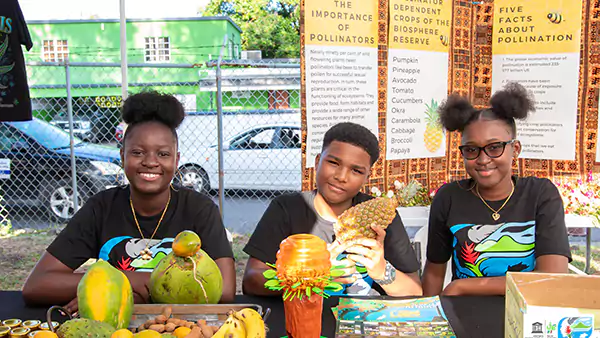
St. Mary’s Biosphere Reserve: A Natural Treasure
Nestled within the beautiful landscapes of St. Kitts and Nevis, St. Mary’s Biosphere Reserve is a sanctuary of biodiversity.
Featuring pristine beaches, dense rainforests, mangroves, cloud forests, and coral reefs, it is home to thousands of species and serves as a vital ecological asset for the Caribbean.
Designated a UNESCO Biosphere Reserve in 2011, St. Mary’s spans a vast marine area, long forested ridges, and rolling agricultural hills.
However, 32 percent of its land area is degraded, a problem linked to deforestation, overgrazing, unregulated settlements, and poor agricultural practices, according to a 2019 UNCCD assessment.
UNESCO Earth Network Support
To address these challenges, St. Mary’s Biosphere Reserve is the first site to benefit from the UNESCO Earth Network project.
Volunteer scientists are working alongside local stakeholders to:
Gather crucial environmental data
Implement a comprehensive ecological restoration plan
Identify opportunities for sustainable livelihoods that benefit both people and nature
This collaboration aims to reconcile human activity with environmental protection, ensuring that future generations inherit a thriving ecosystem.
Historical and Economic Context
Like many Caribbean nations, St. Kitts and Nevis once relied heavily on the sugar trade as the backbone of its economy.
Government efforts in the 1970s successfully diversified the economy toward tourism, which created new jobs and economic opportunities.
However, the global pandemic revealed vulnerabilities.
Between 2020 and 2021, the nation’s GDP fell by 14.5 percent, followed by another 4.3 percent decline the next year when tourism came to an almost complete halt.
Climate Change and Environmental Risks
Beyond economic challenges, St. Kitts and Nevis faces urgent environmental threats as a Small Island Developing State (SIDS).
Ambassador David Doyle, Permanent Delegate of St. Kitts and Nevis to UNESCO, explained:
“These small island countries, by their very nature, face a number of very serious challenges, which have been accentuated in the last decade by climate change, with more frequent and more violent natural disasters.”
The islands are particularly vulnerable to:
Hurricanes and tropical storms
Rising sea levels and coastal erosion
These pressures highlight the need to restore tropical forest shields and adopt biodiversity-friendly agriculture to protect communities and natural habitats.
Building Capacity for a Sustainable Future
Ambassador Doyle emphasized the importance of international cooperation to meet the United Nations Sustainable Development Goals (SDGs):
“St. Kitts and Nevis needs to secure the expertise, funding, and institutional capacity, which it lacks in sufficient magnitude, to deliver on the Sustainable Development Goals. I believe the work with the Earth Network will be a major step to strengthen our capacity in biodiversity conservation.”
Through ecological restoration and stronger environmental management, St. Kitts and Nevis aims to safeguard its natural heritage while creating economic opportunities rooted in sustainability.
Looking Ahead
The work at St. Mary’s Biosphere Reserve represents more than environmental conservation.
It is a blueprint for how small island nations can build resilience, foster sustainable development, and protect their natural beauty in the face of climate change.